
How to beat Amazon as a small brand: 11 weak spots to strike
You as an independent store owner probably constantly keep an eye on Amazon out of fear its next move can push you out of business.
Bloomberg reports that the behemoth was responsible for 53% of ecommerce sales growth while everybody else combined made 47%. Well, the good news is that you can do a lot about it.
Yes, it’s powerful and they sell gazillion things, but you still have a chance in not 1, but 11 ways.
Amazon has at least 11 weak spots and we’ll help you use them to your advantage.
Amazon’s disadvantages:
- Bad vendor relations
- Bad employer reputation
- Complex user interface
- It can do price dumping because it doesn’t look to turn profit
- It’s hard to discover new products on it if you don’t know how to look for them
- There’s no live support
- There’s little space for branding and differentiation
- It’s flooded with mass-produced, questionable-quality items.
- It does not let you control communication or make use of leads and conversions.
- It relies on bestsellers and (often fake) reviews.
1. Amazon has bad vendor relations
It’s no secret that the giant is not a great partner to work with. Many sellers only work with it as much as they need to and they’re very careful with contracts and how much info they share.
In fact, many are leaving the marketplace and going on their own.
You, having a self-standing store, are in a much better position because you can use third-party sales intelligence and ecommerce analytics, and make independent decisions.
Also, that’s a good lesson if you rely on manufacturers and vendors. You’d better treat well those whose products fill up your pockets.
Good relations lead to better terms and more competitive prices so it’s worth it in the long run.
2. Bad employer reputation
“Happy employees create happy customers.”
That’s a mantra we all agree on but rarely put to practice. However, Amazon already has a bad reputation as an employer so you can shine.
All employees – from developers and support agents to the truck guys – have an impact on the experience you deliver, so by treating them well, you get customer satisfaction in return.
Related: Use customer service for retention
If you have a smaller team and everybody does everything – even better, you’re close so everyone can be managed and motivated in a much more personal way!
The key is to balance workload, set realistic expectations, provide the tools and means for properly doing their job and stimulate open and friendly atmosphere.
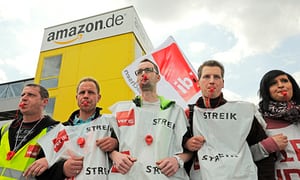
Amazon employees in Germany on strike
You may not be a giant like Amazon, but if you’re a cool employer, you’ll get good hires, a productive team, and will deliver positive customer experience.
Bonus: Amazon doesn’t have live chat. It’s 2020 and you cannot contact support directly on there.
You can do so much better than that. You can be available for your shoppers and communicate with them and make them feel welcome. Not left alone to rot and churn there.
In fact, it’s as easy as Facebook messenger. You can add the messenger everybody’s familiar with to your site so people can contact you directly and conveniently.
3. Amazon is overly complex
“Where the hell are my messages to sellers?”
“Why are seller review and product review separate?”
I ask myself those questions every time I had no choice but buying from there. There’s so much visual clutter and links to info pages that you often end up exhausted.
You can combat that with the opposite – being as simple and friendly as possible, a site where everything’s easy to find.
It’s amazing how that’s a no-brainer for everyone in the industry and yet the giant is too big to pull it off.
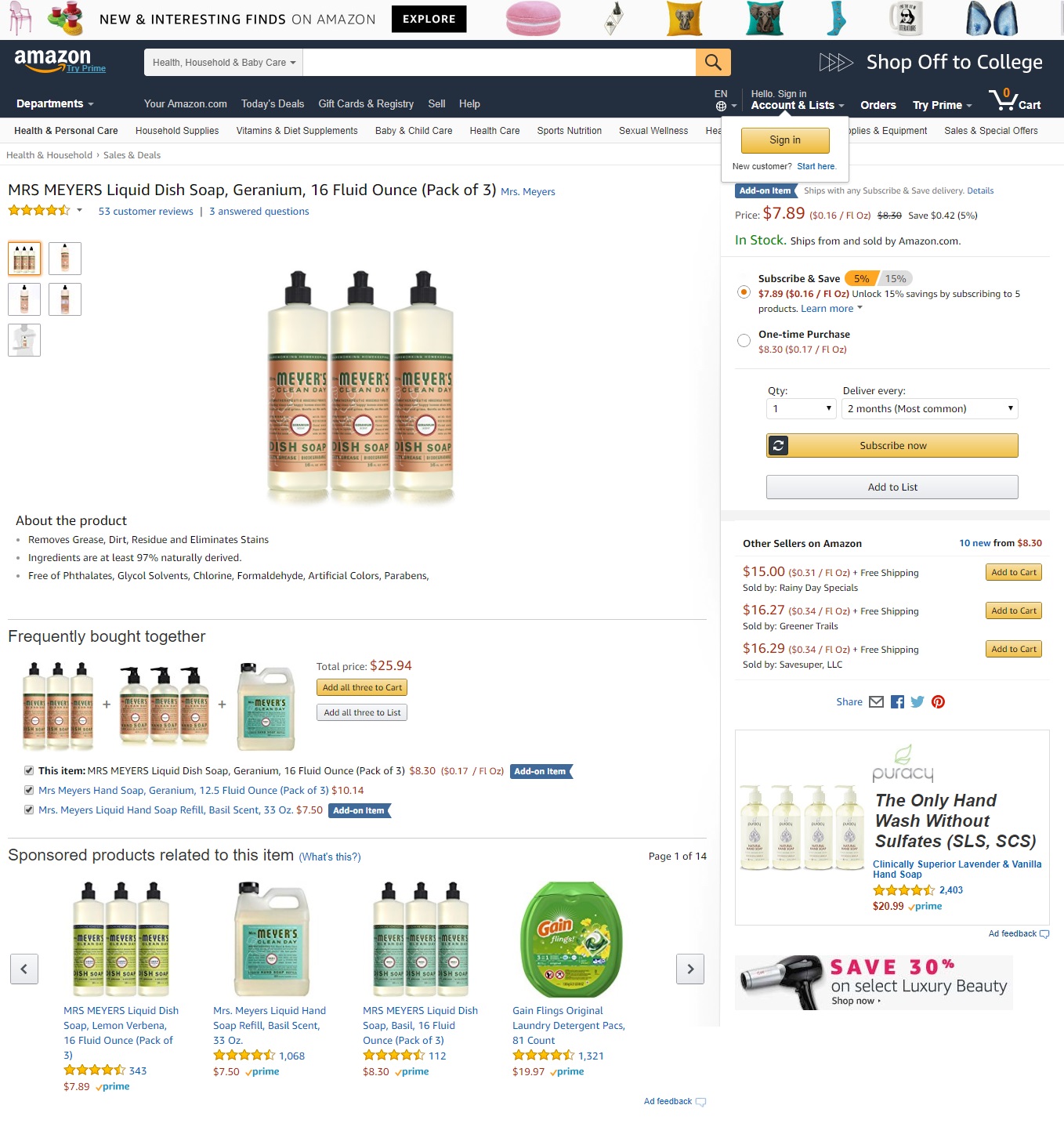
…an it goes on
Actually, on its own user forum, people complain of bad service, problems with finding things and with returns. Also, there’s a reddit thread on the topic. If you just perform better than Amazon on the point people bring up, your chances increase significantly.
Another thing is the marketing tech they use. You probably think their emails are state-of-art but that’s not exactly true.
I personally have received emails reminding me about a product category that I just bought from! How many ice cream makers can I possibly want? 🙂
You, too, have access to great tools like email automation and CRM for online stores. It’s not the tech standing in your way – with a little setting up (and help if you want), you’ll have the recommendation engines, pop-ups, automated emails, behavior insights and so on the big guys have.
4. Amazon is not profitable yet
In spite of its threatening growth, it’s not making much of a profit.
Their strategy is still focused on growth – “growth first, profit later”, which means they’re after the number of sales for now, not the margins. That’s why they compete on price all the time.
And it’s predictable – when people compare prices online, they do check Amazon. That’s their way of staying in business. But it doesn’t have to be yours.
Especially if you’re looking to build a stable, sustainable business that feeds you for a long time, you should be working for profit. Leave price-sensitive customers to Jeff and focus on making money for your own pocket now.
You can do this by not competing on price, but on quality instead.
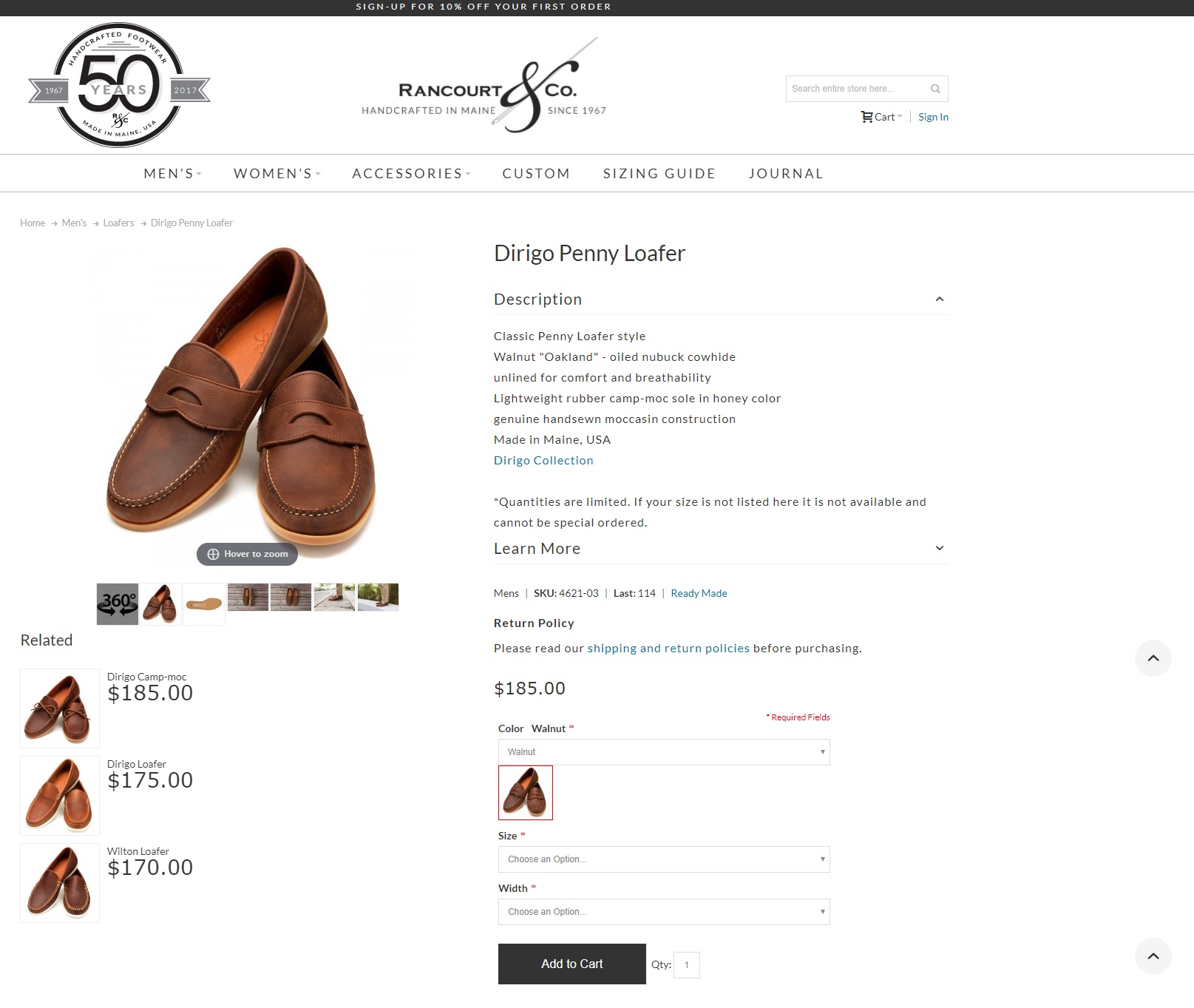
Rancourt and Co sell handcrafted footware. Note their neat and classy product page.
Original, artisan, well-made products cost more and cater to more affluent customers.
It’s a good idea to adjust your product offerings so they’re not mass-appeal, cheaply made or commodity. Products that stand out will make you money faster.
5. Amazon is not for discovering products
It’s true people start from Amazon when they have a specific product in mind. They also do showrooming often (checking out a product at a physical store and buying it on Amazon later).
But it’s incredibly hard to discover something new there that you didn’t know about before. Amazon’s filters and categories are a nightmare and all products are listed in the same way.
You, though, can present your products in a more friendly way so people navigate and look through your offers easily.
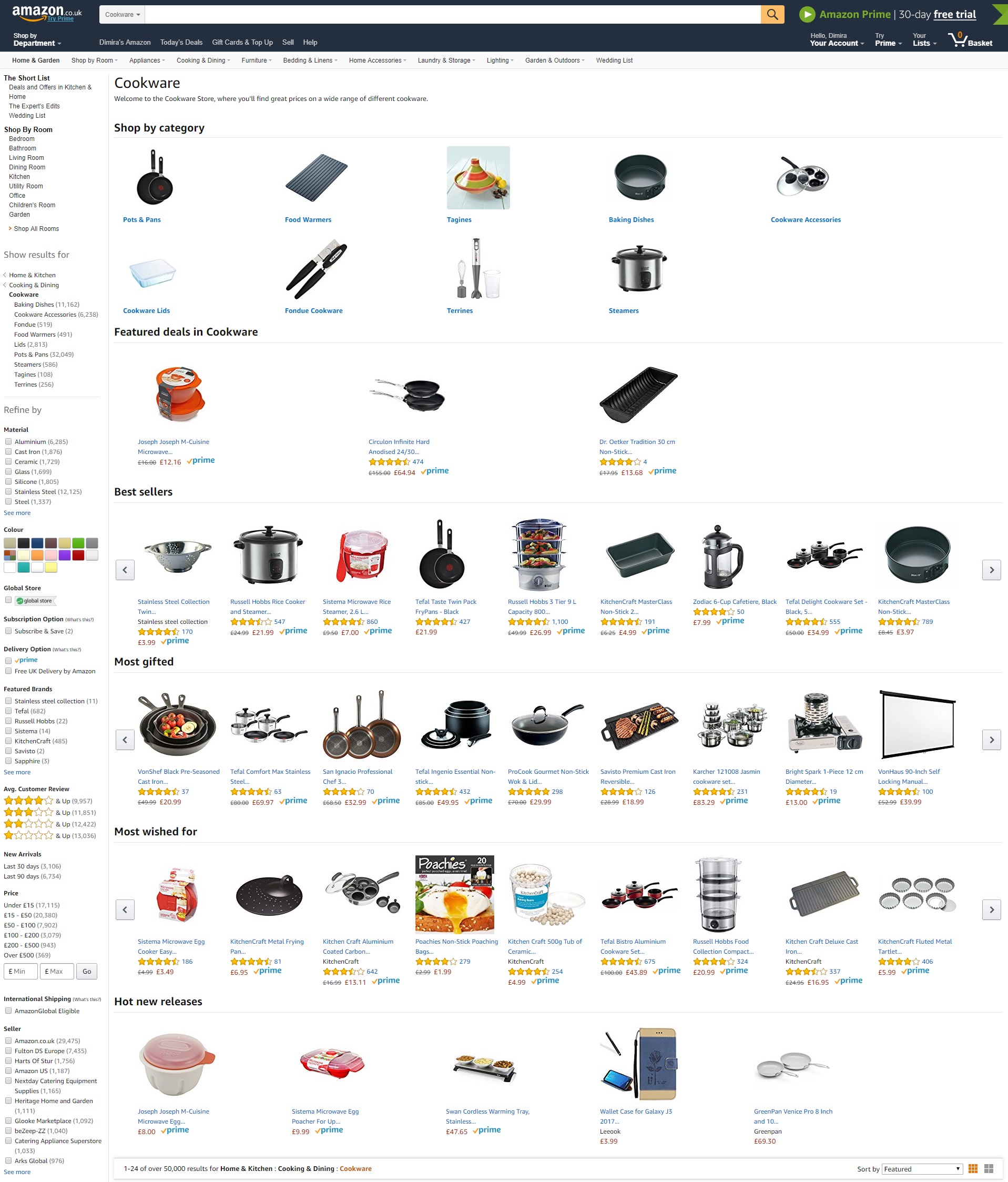
Product listings
Images on Amazon are often quite bad and all product pages look the same.
On your site, you decide how to list the items and what to emphasize. You can have 360-degree visualization and you can add lifestyle and branding (more on that later).
Shopping assistance
Amazon doesn’t have any way of helping shoppers browse and choose – no live chat, just some featured items that are most often irrelevant. And if anything goes wrong, it’s really hard to return an item.
You can offer live assistance for choosing and try-outs (at home or at a physical location) to make sure customers get the right product, size, etc.
This way, your customers will get fast and easy to what they want instead of browsing and getting frustrated.
6. Amazon doesn’t differentiate
For some customers, Amazon is a big corporation, faceless and void of values. That’s yet another opportunity for you to step in as an alternative.
Here’s how one coffee brand differentiated in a crowded market
Those people care where their products come from, how they’re manufactured and what you stand for. Your brand values and vision matter as much as the product itself.
So, stress those things that you have and Amazon doesn’t:
- Values – what you believe in and how your business embodies it
- Supply chain and ethical manufacturing – increasingly important and a decisive factor when transparent
- Larger mission – what else you do for your community, people, the environment, etc.
Wakami, for example, work with women from rural areas to keep their craft alive and their families fed.
I know this one is hard – you have to make it part of your business from the start. But it pays off – more and more people prefer buying from ethical companies and it seems to be the way of the future.
7. Just add branding
To add to the previous point, Amazon is not the place for lifestyle brands.
Yes, most things can be found on it, but it’s not the place for connecting to the customers. There’s no room for creative branding.
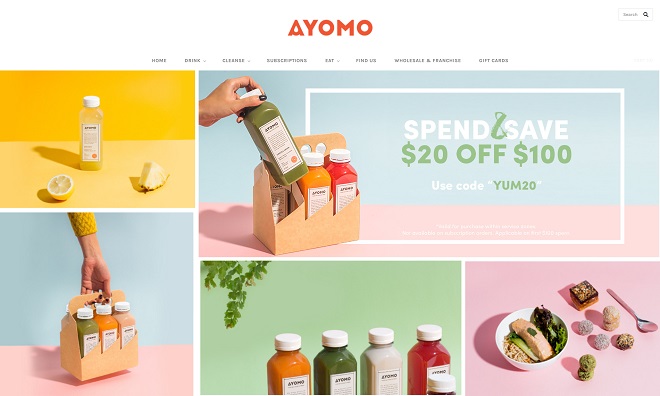
That’s why many big brands fail to convey the same message on their Amazon listings as they do on their own sites.
That’s an open door for you, of course.
Anything you have that connects you better to your audience can come to life on your site.
- You can extensively illustrate how a new product is used or what lifestyle it fits.
- Dedicate space on your site to hobbies or tastes you share with your target audiences like a specific type of music or zero-impact tourism.
- Create content and partnerships with the brand lifestyle in mind.
- Go offline – organize events for your perfect customers.
These are things the super machine cannot do. Merchants on there even have to work hard for awareness and then send shoppers to the marketplace. But you – you can just hand out stickers with your brand name at the coolest festival this summer.
But you – you can just hand out stickers with your brand name at the coolest festival this summer.
8. Amazon doesn’t sell everything possible on earth
What’s Amazon’s biggest strength? That you can find almost anything there. The key word here is almost.
Proprietary, craft, personalized, limited-edition or handmade products are really hard to find there. (Yes, on Amazon Handmade, too. Read more about that here.)
Let’s be honest, apart from the big brands, it’s flooded with no-name, cheap, shady, mass-produced items. You stand no chance with commodity items.
So if there’s one sure way to eliminate it as a competitor is to sell something they don’t have – your own products, designs, and skills. If you haven’t started out yet, think about that.
If your products are original, quality-made, authentic, innovative and so on, you have a huge chance to break through and people to notice you.
Do you think the squatty potty started out on Amazon? Or that Halfbike needs it?

9. Personalization
Everyone sees the same deals and prices on Amazon – no personalization of offers other than similar products to what you’ve been looking at.
When you have control over your customer data, though, you can tailor their experience in more than one way.
- You can run completely separate email flows with different offers and landing pages for the different types of customers (and even show them exclusive discounts).
- You can show people only things they’re interested in. It can be done with a quiz and displaying certain pages depending on the results.
- You can do highly targeted remarketing on FB only with products people have already been looking at.
- You can cross-sell and upsell with relevant items, not just generically.
10. Amazon relies on bestsellers
On Amazon, the bestsellers are usually the products with the most reviews. It’s a vicious circle because the more reviews, the more orders and more new reviews those products get.
Meanwhile other products – probably just as good – may never be seen by buyers. This way, the whole thing relies on the bestsellers and pretty much ignores the others.
For your own store, however, you have control over this process and can play around to make money out of all your products, not just the bestselling bunch.
Some ways to do it:
- Rotate your featured products – new ones, slow-moving ones or discounted.
- Use social proof other than reviews to push unpopular products.
- Implement wishlists and use them for targeted personalized discounts.
- Showcase your niche products better so people understand them.
You don’t have to rely on the top performers only like Amazon does.
11. On your turf, Amazon may not stand a better chance
Location is still a factor in ecommerce.
In smaller countries like ours, there’s no local Amazon and we have to order from Amazon.co.uk and delivery is often complicated. So local players are in a much more favorable position.
Another plus of being a small and independent store is that you can add physical stores like Bonobos does to focus on a specific market. Any events, partnerships, causes and so on also work best if tied the local community and context.
Believe me, Amazon is not coming to my city to organize a craft beer festival. 🙂
See, there ARE ways you can be better than the giant even with the resources you have now. Yes, it requires you to step up your customer service game and provide a truly delightful shopping experience, but buyers are setting the bar high.
Long gone are the days when we could just whip up a site and swim in cash. People buy experience now. The good news is that the Amazon experience is not amazing. 🙂
Build and grow your ecommerce brand
Metrilo’s mission is to help you build your ecommerce brand and win your place in the customer’s heart. We share what we learn from our daily work with product innovators and founders here. Subscribe to our weekly newsletter to get the freshest lessons and conquer your niche.
We promise, no spam.
Thank you for subscribing!
See you soon :-)



